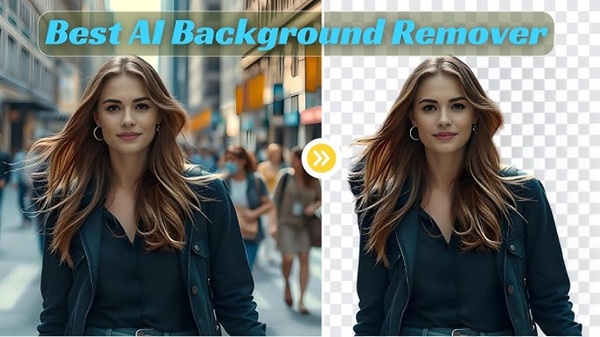Using artificial intelligence to eliminate watermarks sets off a path that both excites and questions. Some circles call it water mark remover from image. Technology removing undesired blemishes from images sounds nearly magical. Still, things are not entirely perfect. Everyone working in this field has a story or two about some mistakes that occasionally surface more often than others.

The program performs sometimes like a charm. Other times, your beloved clothing might show traces of the watermark as tenacious stains. See your image as a puzzle. Every component of artificial intelligence algorithm works differently. Sometimes the components fit exactly; sometimes a stray pixel surfaces out of alignment. These discrepancies would be noticed by human eyes, which would irritate users somewhat.
The watermark’s ghosting on the last image is one often occurring mistake. The mark looks to be a fading, hazy duplicate. “I expected clean removal,” users have complained, “but what I got was a shadow of the original watermark.” Mistakes like these cause you to question whether the algorithm gives enough focus on specifics. Like a smear one cannot remove with a single swipe, the procedure may involve some mistakes with traces left behind. One must so carefully examine every processing stage in order to fix this. Sometimes manual interventions enable one to clear the mist of mistakes.
Losing finer information is another usual trip-through. Occasionally the method unintentionally removes delicate details around the watermark and concentrates too much on destroying it. Imagine a sculptor chiseling a statue and removing a bit too much marble to produce a face more akin to an impressionist painting than a true likeness. The difficult part is juggling mark removal with texture retention. Some programs default to a heavy-handed approach. Users have complained that images with complex backgrounds suffer since the pixels vanish with the watermark. Often advised is a cautious change to the parameters of the algorithm. It’s like changing the salt level in a soup; too much will ruin the meal.
Sometimes removing a watermark causes unusual edge effects. Sometimes the edge of the deleted region seems more sharp or even shows halo effect. Imagine cutting out a figure from a picture with scissors and leaving a rough edge behind; the cut suggests its artificial source even if the object stays whole. This is especially troublesome in photographs requiring great accuracy, including those for online retailers. Edge smoothing is one approach to fix the problem. Consider it as providing the natural flow instead of sudden jumps for the aqueous ripples around a stone in a pond.
Sometimes users run across misreading of algorithms. Important details may be unintentionally removed if the AI detects a region of the image as a watermark when it is not. This mistake is like a too enthusiastic editor who cuts out a paragraph believing it to be filler. Here, the precision of recognition algorithms is really vital. Certain systems have additional layers of assessment to ensure that necessary components are not trapped in the system. Practically, this can be corrected by improving the detection phase using more training data. It’s like teaching a young child over time to separate background noise from valuable feedback.

Another trip hazard are relics. Users of the AI program occasionally find little, distracting bits strewn throughout the image. These relics can be noise or uneven textures absent before the eradication process started. Imagine yourself wiping a mistake on paper with an eraser that smudges the whole side of the notebook instead of neatly cleaning it. Many times, digital artists conduct post-processing procedures to tidy these fragments. Software updates sometimes address these problems, but another choice is a hands-on approach including extra screening.
Although this conversation sounds technical, both casual users and many creative professionals will find resonance in these issues. Any remaining flaw can feel like a broken promise since people pay money in these systems hoping for consistent, clean results. Though it still struggles with the grace a human may naturally provide, the power of artificial intelligence in this work is indisputable. Some programs now provide a rapid switch between automatic deletion and hand editing. This dual technique closes the distance between that old-fashioned human vision and raw computational capability.
Those systems are under constant improvement by developers. Their goal is not just to eliminate watermarks but also to accomplish so with least disturbance to the remainder of the picture. Certain programmers play about with several training techniques. They might add extra noise to enable the computer to understand which areas of an image should remain unaltered. The trial-and-error effort behind each next upgrade could surprise users. Consider it as a cook always experimenting with recipes until he finds the ideal mix of ingredients and spices.
Even consumers can help the system to be somewhat better. Developers give comments great thought when they are received. Not only does reporting a ghosting effect or an artifact help you; many others in the community gain from it as well. As vital as solid teamwork on a sports field is this friendship between users and developers. Sometimes a basic forum post generates an idea that results in a notable tool performance enhancement. A community that supports user contributions pushing the technology ahead usually promotes

Working with artificial intelligence gives a different taste to troubleshooting. One could schedule an evening to go over the before- and-after pictures, jot some remarks, and even find fun in the surprising results. The accomplishments are honored, while the mistakes become teaching stories shared over coffee breaks. While talking about the minor textures lost, picture sharing a snapshot of a barely-there watermark for a laugh. Sometimes talking about mistakes reveals the most insightful information. This cooperative learning environment is novel and reminds us that, particularly when technology become involved, nobody is flawless.
Various tools and programmes give different degrees of control over the watermark eradication procedure. While some allow users paint over the area needing repairs, others offer sliders to select the degree of the removal. Those who value having a last say on the result may find great appeal in the method with customizable controls. It’s like being handed a paintbrush following machine drawing of a sketch. If you are creative, this mix of automation and hand adjusting offers the best of both worlds. One is strongly advised to experiment.
